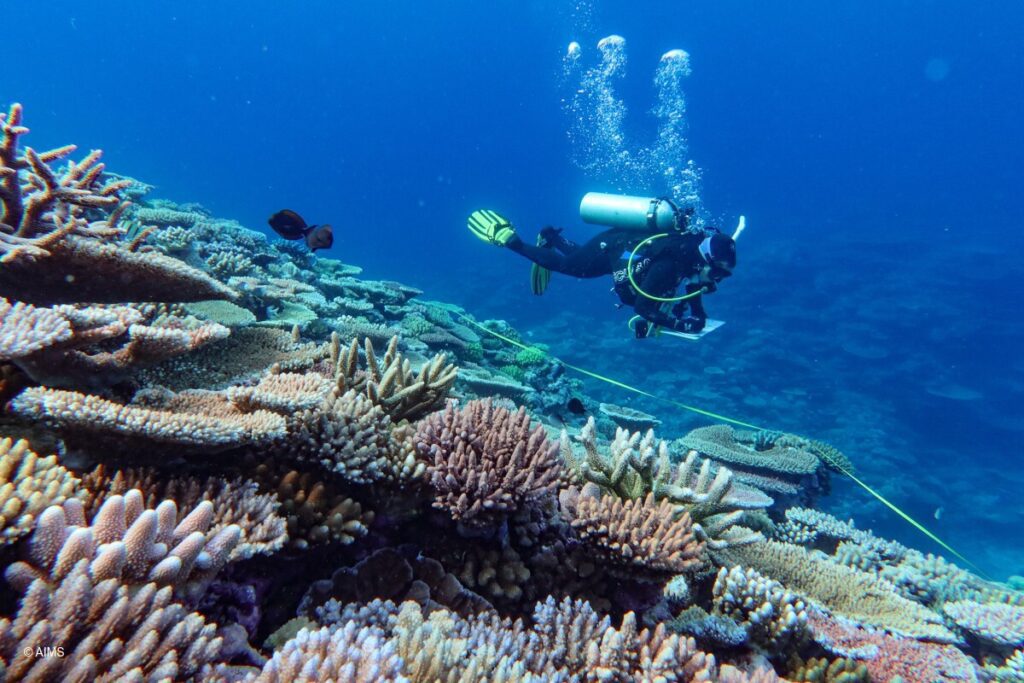What’s Happening?
Hard coral cover across the Great Barrier Reef has dropped sharply, returning to long-term average levels, according to the 2025 Long-Term Monitoring Program (LTMP) report from the Australian Institute of Marine Science (AIMS). The decline follows the 2024 mass bleaching event, which was worsened by cyclone damage and an increase in crown-of-thorns starfish.
The drop represents the largest annual coral loss recorded in two of the three regions since AIMS began monitoring in 1986. The report covers data collected from 124 reefs between August 2024 and May 2025.
Why It Matters
The Great Barrier Reef is one of the world’s most important natural ecosystems. It supports biodiversity, tourism, fishing, and science. AIMS says the recent changes in coral cover reflect a system under pressure. Coral cover has been swinging between record highs and lows over the past 15 years, a pattern not seen before.
“This year’s record losses in hard coral cover came off a high base, thanks to the record high of recent years,” said Dr Mike Emslie, leader of the AIMS LTMP. “We are now seeing increased volatility in the levels of hard coral cover. This is a phenomenon that emerged over the last 15 years and points to an ecosystem under stress.”
While current coral levels are now near long-term averages, the shift downwards was steep and rapid. Dr Emslie said that in the past, fluctuations were more moderate.
Local Impact
The southern region, covering areas from Proserpine to Gladstone, experienced its most severe coral loss since monitoring began. For the first time, this region showed signs of substantial bleaching. Acropora corals were among the most heavily affected. These are fast-growing, brightly coloured corals that form the bulk of the Reef’s visible structure. They are known to be highly susceptible to heat stress, cyclones, and crown-of-thorns starfish.
“This is also the first time we’ve seen substantial bleaching impacts in the southern region, leading to the largest annual decline since monitoring began,” Dr Emslie said.
These changes may affect marine life and local conditions, especially in areas where coral loss is visible from the surface or during reef tours.
By the Numbers
-
Northern region (Cape York to Cooktown): Coral cover fell from 39.8 percent to 30 percent
-
Central region (Cooktown to Proserpine): Declined from 33.2 percent to 28.6 percent, a drop of 13.9 percent
-
Southern region (Proserpine to Gladstone): Dropped from 38.9 percent to 26.9 percent
Of the 124 reefs surveyed:
-
77 had coral cover between 10 and 30 percent
-
33 had between 30 and 50 percent
-
2 reefs had cover above 75 percent
-
2 had less than 10 percent
Zoom In
Despite previous gains in coral recovery, the 2024 bleaching event wiped out much of that progress. Acropora species were especially hit hard. AIMS has previously said these corals are the first to go, and this year’s results reinforced that.
“These corals are the fastest to grow and are the first to go, as they are susceptible to heat stress, cyclones and are a favourite food of crown-of-thorns starfish,” Dr Emslie said.
Zoom Out
The 2024 bleaching event was part of a larger global event that began in the Northern Hemisphere in 2023. It was the fifth mass bleaching event recorded on the Great Barrier Reef since 2016. This one had the largest spatial footprint ever observed, according to AIMS CEO Professor Selina Stead.
“This year Western Australian reefs also experienced the worst heat stress on record. It’s the first time we’ve seen a single bleaching event affect almost all the coral reefs in Australia,” she said.
Professor Stead added that the damage is not limited to one year.
“Mass bleaching events are becoming more intense and are occurring with more frequency, as evidenced by the mass bleaching events of 2024 and 2025. This was the second time in a decade that the Reef experienced mass bleaching in two consecutive years.”
She said the findings are a strong indicator of how ocean warming, caused by climate change, continues to affect coral communities at scale.
What to Look For Next?
AIMS will release further research once peer review is complete. The report also highlights the need for better public understanding of reef health and sustainability. These results may play a role in future marine management and policy decisions.



